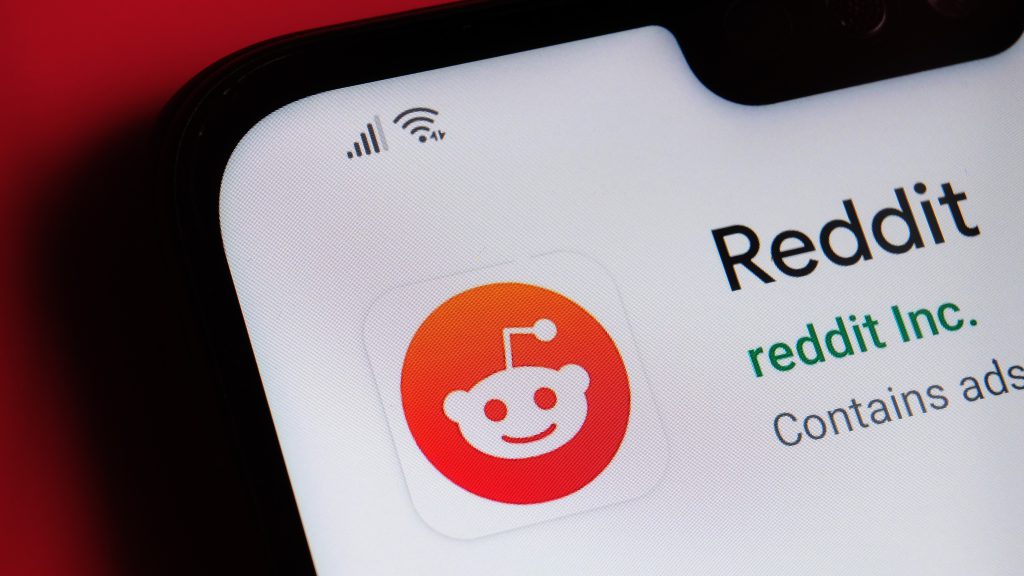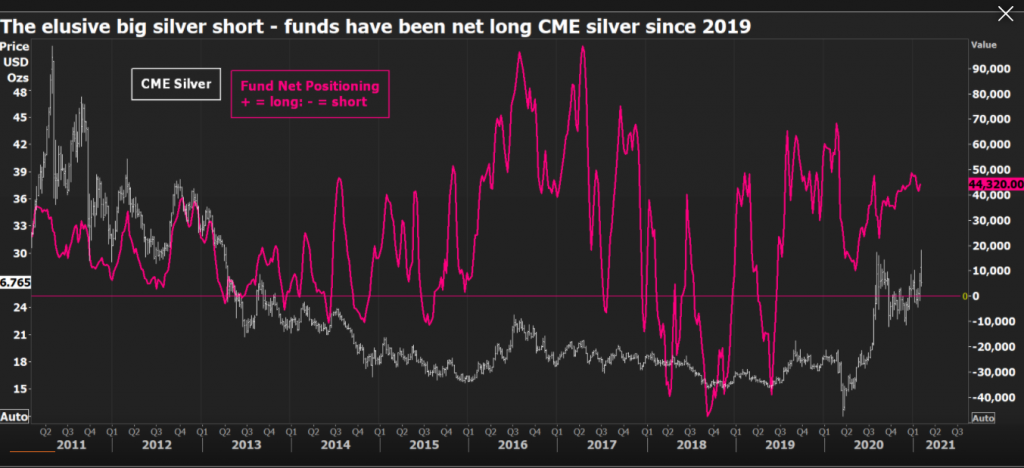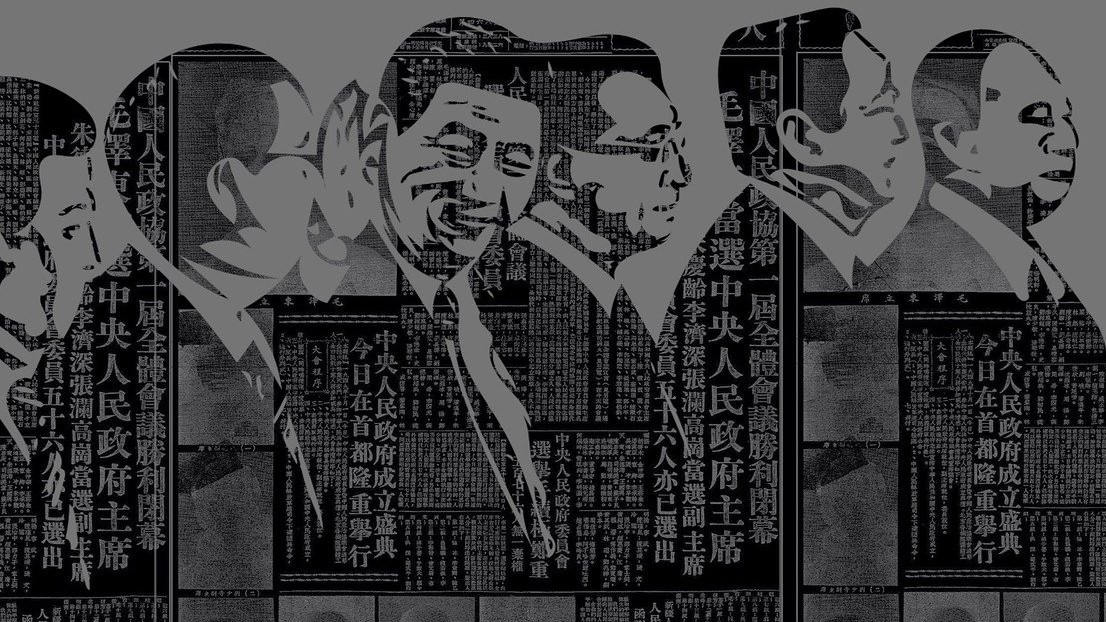Populist crowd fails to breach the silver fortress for now

(The opinions expressed here are those of the author, Andy Home, a columnist for Reuters.)
Robinhood’s army of small retail investors may have failed to storm the silver market, but the online broker’s devotees certainly gave it an almighty shake.
The spot silver price surged by 20% between last Thursday and Monday this week, briefly hitting an eight-year high of $30.03 an ounce.
An increase in the margin required to trade silver on the CME exchange has curbed animal spirits and the metal has fallen back to $27.12, though a collective stampede for physical metal continues to deplete retail supplies of bars and coins.
Ironically, the silver squeeze may have benefited the very funds that have come in for vilification for shorting stocks
The crowd has found that squeezing a commodity market such as silver is a very different proposition from cornering a short-seller in an individual stock such as GameStop. Particularly when the targeted big short doesn’t exist.
They’ll probably be back again, though, in silver or the next big thing.
Crowd surges organised through social media regularly rock Chinese commodity markets and the strategy is starting to catch on in the West, even if this particular silver squeeze seems to be fizzling out.

The big short
The rallying call for an attack on the silver market came on Thursday in the form of a post on the r/wallstreetbets Reddit message board, the same one used to spark frenzied buying of GameStop and other shares shorted by hedge funds.
The post urged investors to buy physical silver via exchange-traded fund (ETF) iShares Silver Trust SLV, the shares of which represent ounces of silver sitting in vaults.
Retail investors heeded the call and snapped up 37 million ounces worth of shares in the next 24 hours, with others rushing to their local bullion dealers.
But who is the “biggest short”?
Not the hedge funds that were targeted by Reddit traders in the stock market. The fund community has been net long of the CME silver contract since the middle of 2019.
Ironically, the silver squeeze may have benefited the very funds that have come in for vilification for shorting stocks.
That counterintuitive outcome seems to have sapped morale among the core Reddit crowd, with many questioning whom they are supposed to be squeezing.
Silver revolution
Chasing the big silver short has sucked the Robinhood stocks army into a whole different world of precious metals conspiracy theory and radical populism.
This is a world populated by those who believe that Wall Street is in cahoots with the US government to keep the price of gold and silver artificially suppressed to protect the existing economic order.
“Big banks have made big fortunes by manipulating the silver market for decades,” said the #SilverSqueeze Manifesto.
“This is a movement to help level the playing field between everyday people and the billionaires who control the big financial institutions that control the money, and thus control us,” it said, adding that the silver market is “the Achilles heel of the old system, and its time has come”.
Paper metal
This belief that the likes of JPMorgan and Goldman Sachs are using futures short positions to suppress the price of physical metal has been around a long time.
It is based on a binary world view that paper transactions contradict physical reality.
Commodity markets operate more holistically than that, however, with transactions in the futures market often deriving from the need to hedge holdings of the physical commodity.
The Reddit crowd may have bought up 37 million ounces of silver in one day last week, but at the end of December there were another 33,608 tonnes of the stuff sitting in London vaults, according to the London Bullion Market Association.
That’s more than a billion ounces valued at $28.6 billion. That stockpile is continuously being borrowed, lent, bought and sold as banks interact with the industrial supply chain and the investment sector. Given its value, all of it will be hedged.
The biggest short on the CME silver contract is not the hedge fund community but the 52,750 contracts held in the “producer/merchant/processor/user” category.
The big paper short, in other words, is a big physical long. Squeeze it too hard and industrial quantities of silver may be coming your way.
Strength in numbers
While the Robinhood army’s energies seem spent for now, the ability of the crowd to move prices, even in markets as globally deep as silver, has been amply demonstrated. And some early movers on the silver squeeze will have made large profits.
Chinese retail investors have been using the same mass effect for many years, coordinating surges in WeChat rooms.
The crowd moves from one hot market to the next, using its strength in numbers to generate a giant momentum machine. The target is often less important than the potential to catch a moving trend.
The Zhengzhou ferro-silicon contract was squeezed in 2019 simply because retail traders had been pushed out of the bigger steel market by exchange margin increases.
Shanghai copper has been crowd-shorted a couple of times in the past few years, in one instance in a collective battle of strength against a major fund long position.
Social media facilitates the same bewildering mix of mutual exhortation, snippets of genuine information and lots of wild rumour-mongering, as is evident in the #SilverSqueeze meme.
The phenomenon is spreading. In South Korea they’re called “ants”. In Thailand they’re called “moths”. There’s a lot of people in this world of low interest rates looking to make a fast buck in the markets.
Chinese regulators have been battling the problem for years. The first line of defence is to increase trading fees, the second is to issue increasingly strident government warnings and the third is to intervene directly, either by suspending some types of trade or mobilising a team of state-owned banks to crush the crowd.
CME’s margin hike and US Treasury Secretary Janet Yellen’s pending meeting with regulators to discuss recent market volatility conform to the standard Chinese operating procedure of how to deal with speculative excess.
Western regulators will need to catch up fast with their Chinese counterparts because the retail army is likely to resurface with new tactics.
“Reddit’s Wall Street Bets community (…) has set a shining example that other movements can follow,” according to #SqueezeSilver Manifesto’s anonymous author.
“A dedicated army of everyday people can leverage their collective skills and resources (…) to alter deeply entrenched power dynamics and level the playing field.”
Small investors from Shanghai to Seattle may well agree.
(Editing by David Goodman)
More News
Chile Minister says copper could find support at $3.9/lb
Mining Minister Williams said metal prices will largely depend on evolving trade tensions between the U.S., China, and the EU.
April 07, 2025 | 06:45 am
China deploys rare earths as weapon in trade war with Trump
Beijing said Friday it will tighten controls on exports of seven types of rare earths.
April 07, 2025 | 06:22 am
Ukrainian team to travel to US this week to discuss minerals deal, Ukrainian source says
The Trump administration has proposed a broader minerals deal, which Ukraine has been reviewing recently.
April 07, 2025 | 06:16 am
{{ commodity.name }}
{{ post.title }}
{{ post.excerpt }}
{{ post.date }}




Comments